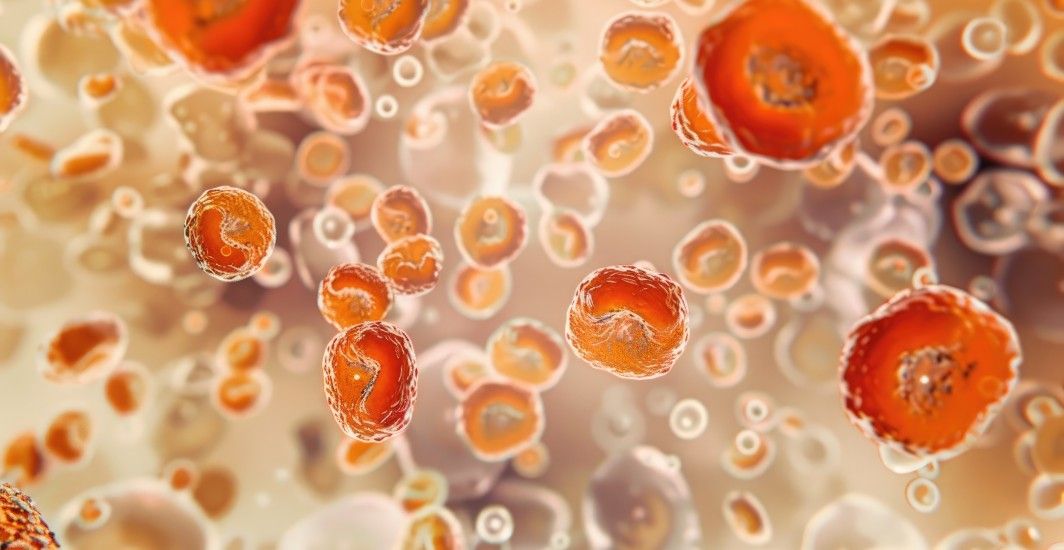General Health
Test for Epithelial Cells in Urine - Normal Range, Purpose, Procedure, and Results Interpretation
7 min read
By Apollo 24|7, Published on - 21 May 2025
Share this article
0
0 like

Epithelial cells in urine testing is a diagnostic procedure used to detect and assess the presence of these cells in a urine sample. This test helps identify various health conditions that may affect the urinary tract, kidneys, or bladder. Epithelial cells are a type of cell that lines multiple surfaces in the body, including the urinary tract. Although the presence of epithelial cells in urine is regular in small quantities, elevated levels may indicate an underlying medical condition.
Overview
Epithelial cells are found in different parts of the body, and in the urinary system, they line the kidneys, bladder, ureters, and urethra. There are three types of epithelial cells commonly found in urine samples:
- Squamous epithelial cells: These cells come from the outer urethra and are usually harmless. They are typically present in small amounts in urine and do not indicate a medical condition.
- Transitional epithelial cells are found in the bladder, ureters, and kidneys, and are particularly significant for diagnostic purposes. They can be present in the urine in small quantities, but elevated levels may suggest urinary tract infections (UTIs), bladder issues, or kidney problems.
- Renal epithelial cells: These cells come from the kidneys and are often indicative of kidney damage or disease if found in large quantities in urine.
Generally, the presence of epithelial cells in urine is not uncommon, and their levels can vary depending on various factors, including gender, age, and overall health status.
Purpose of the Epithelial Cells Test
The test for epithelial cells in urine is performed to evaluate the condition of the urinary tract and kidneys. It can help in diagnosing or monitoring:
- Urinary tract infections (UTIs): UTIs often cause an increased presence of epithelial cells, especially transitional and renal epithelial cells, in urine.
- Kidney disease or damage: An elevated number of renal epithelial cells can indicate kidney problems, such as glomerulonephritis or acute tubular necrosis.
- Bladder issues: Higher levels of transitional epithelial cells may suggest issues with the bladder, such as cystitis or bladder cancer.
- Urinary tract obstruction: When there is an obstruction in the urinary tract, epithelial cells might be shed at a higher rate, resulting in an abnormal urine test.
How to Prepare for the Epithelial Cells Test
Preparing for an epithelial cells test is generally straightforward and does not require significant changes to your daily routine. However, to ensure the accuracy of the results, there are some preparatory steps you should follow:
- Provide a clean-catch urine sample: A clean-catch urine sample is important to avoid contamination. The patient will need to clean the genital area thoroughly and urinate a small amount before collecting the urine in a sterile container. This ensures that the sample only contains urine from the bladder and not from the urethra or genital area, which may contain bacteria or epithelial cells from other sources.
- Avoid heavy exercise: Strenuous physical activity can sometimes increase the number of epithelial cells in the urine, potentially skewing the test results. It is advisable to avoid heavy exercise 24-48 hours before the test.
- Provide a full medical history: Be prepared to share any symptoms or conditions you are experiencing, as well as medications you are taking. Some drugs or supplements may affect the results.
Follow your doctor’s instructions: If your healthcare provider has specific instructions regarding the timing or method of collecting your urine sample, follow them carefully.
Procedure for Epithelial Cells Test
The test is part of a routine urinalysis done at a clinic or lab. You’ll provide a clean-catch midstream urine sample to avoid contamination. The lab examines the sample under a microscope to count and identify the types of epithelial cells. Your doctor then reviews the results along with your symptoms and medical history.
Epithelial Cells Test: Results Interpretation
Interpreting the results of an epithelial cell test can vary depending on several factors, including the type of epithelial cells found and their quantity. The general process involves counting the cells and identifying the types present.
- Normal findings: In a healthy individual, only a small number of epithelial cells are usually found in the urine. The presence of squamous epithelial cells is common, but an excess of transitional or renal epithelial cells might suggest a problem.
- Elevated levels of epithelial cells: If there are significantly higher numbers of epithelial cells in the urine, it may indicate the presence of an underlying medical condition. The interpretation of the results depends on the types of cells found:
- Squamous epithelial cells: A small number is considered normal, but a large number could indicate contamination during the sample collection process.
- Transitional epithelial cells: An increased number may suggest a urinary tract infection, bladder irritation, or even bladder cancer.
- Renal epithelial cells: High levels are a strong indication of kidney damage or disease, such as glomerulonephritis, acute kidney injury, or acute tubular necrosis.
It is important to note that the presence of epithelial cells alone is not diagnostic. Further tests, such as urine cultures, imaging studies, or kidney function tests, may be needed to confirm the diagnosis.
Epithelial Cells Test Normal Ranges
The normal range for epithelial cells in urine can vary slightly depending on the laboratory and the methods used. However, general guidelines suggest the following:
- Squamous epithelial cells: Typically, a small number of squamous epithelial cells in urine is normal, especially in females. These cells are typically present in low numbers, ranging from 0 to 5 cells per high-power field (HPF) under a microscope.
- Transitional epithelial cells: Low levels of transitional epithelial cells may be present in the urine, but the count should generally not exceed five cells per HPF.
- Renal epithelial cells: The presence of renal epithelial cells in the urine is rare and typically suggests an underlying kidney problem. Normal levels should be 0-1 cell per HPF. Higher levels may indicate kidney injury or disease.
What is the Normal Range of Epithelial Cells in Urine During Pregnancy?
During pregnancy, it is common for women to have a slightly higher number of epithelial cells in their urine due to changes in the urinary system. The normal range for epithelial cells in urine during pregnancy is similar to that of non-pregnant women. However, an increased number of transitional or renal epithelial cells may indicate complications such as urinary tract infections or kidney issues, which require medical attention.
Normal Range of Epithelial Cells in the Urine of a Female
For females, the normal range of epithelial cells in urine typically includes a small number of squamous epithelial cells, with transitional epithelial cells occasionally present. Renal epithelial cells are rarely found in healthy individuals. The normal range should be around 0-5 squamous epithelial cells per HPF, and transitional epithelial cells should not exceed 5 per HPF.
Normal Range of Epithelial Cells in the Urine of Males
The normal range for males is similar to that of females, with a small amount of squamous epithelial cells being normal. However, males typically have fewer squamous epithelial cells in their urine due to anatomical differences. Transitional and renal epithelial cells should still fall within the normal range of 0-5 cells per HPF.
Abnormal Levels of Epithelial Cells in Urine
Abnormal levels of epithelial cells in urine may indicate various health conditions. Some potential causes include Urinary tract infections (UTIs), Kidney disease, Bladder issues and Urinary tract obstruction.
Managing Abnormal Epithelial Cells Test Results
If your epithelial cells test results show abnormal levels, it is important to follow up with your healthcare provider for further evaluation. Your doctor may order additional tests, such as urine cultures, blood tests, or imaging studies, to identify the underlying cause of the abnormality. Treatment will depend on the specific condition diagnosed and may include antibiotics for infections, medications for kidney disease, or other interventions for urinary tract issues.
Conclusion
The test for epithelial cells in urine is a simple yet valuable diagnostic tool that can help identify various health conditions affecting the urinary tract and kidneys. Understanding the normal range of epithelial cells in urine and how to interpret abnormal results can empower patients to take proactive steps toward maintaining their urinary health. By discussing test results with a healthcare provider, individuals can ensure that any potential issues are addressed early, leading to better outcomes and overall well-being.
General Health
Frequently Asked Questions
What is the normal range of epithelial cells in urine?
What is the normal range of epithelial cells in urine?
Why are epithelial cells found in urine?
Why are epithelial cells found in urine?
What does it mean if I have renal epithelial cells in my urine?
What does it mean if I have renal epithelial cells in my urine?
Is the epithelial cells test painful?
Is the epithelial cells test painful?
How do I prepare for the epithelial cells test?
How do I prepare for the epithelial cells test?
What are transitional epithelial cells?
What are transitional epithelial cells?
Can pregnancy affect the epithelial cells in the urine?
Can pregnancy affect the epithelial cells in the urine?
Can I collect the urine sample at home?
Can I collect the urine sample at home?
How are abnormal epithelial cell test results treated?
How are abnormal epithelial cell test results treated?
Are epithelial cells in urine common?
Are epithelial cells in urine common?
Leave Comment
Recommended for you
.jpg?tr=q-80)
General Health
Thyroid and Hair Loss: Understanding the Connection
Thyroid disorders are among the most common chronic conditions affecting multiple lives. The chances of thyroid issues developing in women are five to eight times higher than in men.

General Health
Eye Donation: 6 Myths To Stay Away From If You Wish To Be A Donor
Though the majority of eye diseases can be treated, blindness is still a huge global health concern. One can help these people by donating eyes. Read on to know the most common myths associated with eye donation.

General Health
Losing Hair In Patches? It Can Be This Disease!
Alopecia areata is not curable but the resulting hair falls can be treated. Read our blog to understand the ways to cope with resulting hair fall.
Subscribe
Sign up for our free Health Library Daily Newsletter
Get doctor-approved health tips, news, and more.
Visual Stories

Plant-based Foods That Are a Great Source of Iron
Tap to continue exploring
Recommended for you
.jpg?tr=q-80)
General Health
Thyroid and Hair Loss: Understanding the Connection
Thyroid disorders are among the most common chronic conditions affecting multiple lives. The chances of thyroid issues developing in women are five to eight times higher than in men.

General Health
Eye Donation: 6 Myths To Stay Away From If You Wish To Be A Donor
Though the majority of eye diseases can be treated, blindness is still a huge global health concern. One can help these people by donating eyes. Read on to know the most common myths associated with eye donation.

General Health
Losing Hair In Patches? It Can Be This Disease!
Alopecia areata is not curable but the resulting hair falls can be treated. Read our blog to understand the ways to cope with resulting hair fall.